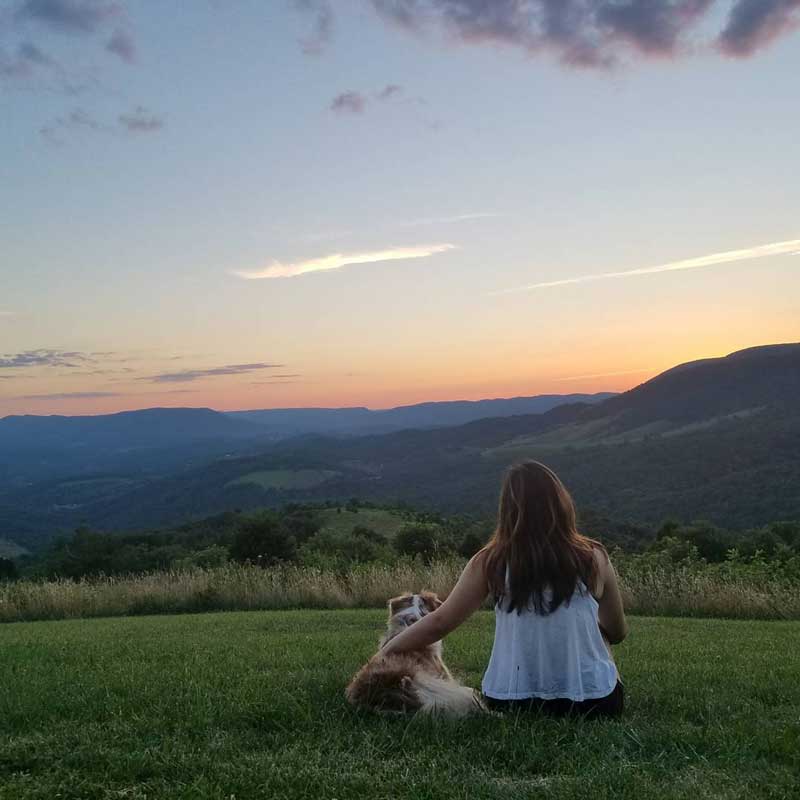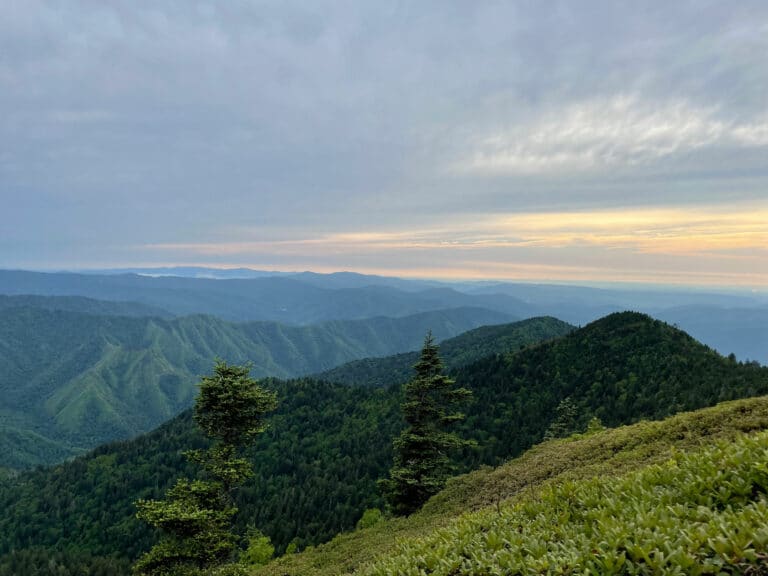
Photo credit: Sarah Vogel
Part 4: This is Your Brain on Nature
I dipped my paddle into the water. No rhythm — a couple of haphazard and lazy strokes every now and again was enough. Propel, drift, repeat. Occasionally, I made an effort to navigate my kayak when something interesting caught my eye: a blue heron stalking the water’s edge, an osprey eyeing me warily from behind her black mask. The river’s edges began to flank both sides as I approached a narrow bottleneck, Little Occoquan Run.
With the water so low, weaving between the massive boulders proved unsuccessful. Not quite ready for the end of the line, I pulled my kayak onto the rocks and abandoned it, hoping to return once I could chart a passage to open water. But the rocks were large and plentiful, trapping the water in stagnant pools. A shimmer of silver. I spotted a large carp floating belly up on the surface of one such puddle, unlucky to have been caught in this maze of rock and water.
Another reflection of sunlight caught my eye, and another. Not just one unlucky fish, I realized. This was a graveyard. I pondered the fate of these hundreds of carp, wondering if they had been trapped by the rocks or died upstream to be carried here by the river. Maybe they died after spawning, like salmon? I soothed myself with rational, detached speculation, ignoring the undercurrent of horror and unease bubbling in my psyche. Whistling in the dark.
By the time I noticed the absence of twittering birds and ambient river sounds, the stillness made my neck hairs prickle. The oily, standstill water, the buzz of flies, the stale smell hanging in the air — everything about this place was offensive.
Yet I still debated the merits of turning around. Not wanting to waste the money I had spent on renting the kayak, I resisted the urge. Surely, just over the next boulder the river would open again. The flies would clear, the water would flow, and I could continue on my journey. But instead, I hoisted myself over a rock to lock eyes with Death’s ugly-mugged, prehistoric companion — the vulture.
Surprised by the sudden appearance, I immediately backed off. He, on the other hand, looked permanently nonplussed, ignoring me entirely. He bent his mean hooked beak to tear another strip of flesh from the carp clutched in his talons, maintaining eye contact as he swallowed. Behind him, the rocks bobbed and bristled in a sea of movement. A hundred vultures crowded together, picking and tearing at the carcasses.
Though I’d seen a handful of them in my life, they had always been peripheral, keeping to the fringes where the road ended and the woods began. For the first time I felt like an intruder, a spectator to their show. And so they regarded me, without much attention or concern, while the mass of black feathers feasted in frenzy. The flutter of their massive wings was the only sound to cut the ominous silence, like the wind flapping through the Grim Reaper’s robe.
After watching them for some time, it was starting to feel a little bit like finding myself in the weird section of YouTube. Here were nature’s garbage men, creatures with stomachs of steel and acid, cleaning life’s messes where no other cared to venture. And it suddenly occurred to me that there was a reason for this.
This was a hostile place for humans. The pools of standing water festering with bacteria from decomposition, mosquito eggs, vulture shit. I tiptoed delicately, my hand hesitant to make contact with anything. While the vultures clearly had not yet had their fill, I most certainly had. My thinking brain finally caught up to what my gut had been saying the whole while: it’s time to go.
I trekked back to my kayak and fantasized a hot shower. As I pushed off the rocks and made my way back to the boat ramp, the clean, splashing water and cheerful bird chatter lifted my mood. Afternoon slipped into evening and fish began snapping at bugs on the surface of the river. I welcomed the ripples that marked their presence, somehow making me feel less lonely. A heron slinked along the bank, its pointed beak and serpentine neck poised like a spear. I wished it luck.
As Little Occoquan Run faded into the background, a feeling of kinship arose within me as I regarded every creature I passed. The osprey did not return the sentiment, her eyes still hard and suspicious. But I knew there was a sameness between us, a commonality that distinguished us from the vultures, creatures drawn to death. This place — one of splashing water, of chirping sparrows, of dark, wet dirt, of mushrooms and butterflies, of hungry trout, of everyone and everything so alive — it felt like home. We were compelled to share the same space, to be near one another, even if we did not share trust.
Despite the danger of sharing a place where the bug is eaten by the fish, and the fish is eaten by the bird, and the bird is eaten by the cat, and the cat enslaves the humans, we know it is a necessary risk. We know that a place where life thrives is a place where our own can thrive too. We know that our fates are bound to the fates of the living things around us. But we know this fact in a way that our brains can never appreciate, and in a way that logic may even impede.
This knowing isn’t taught in grade school. In fact, it comes pre-programmed. Our bodies reveal the truth — it’s the reason we feel with our hearts, in our guts, and down to our bones. It is the knowledge of hundreds of thousands of generations rolled into the shape of a double-helix. It’s a package deal with the bodies we’re born with, a part of the human condition, a part of us that we have no choice but to accept.
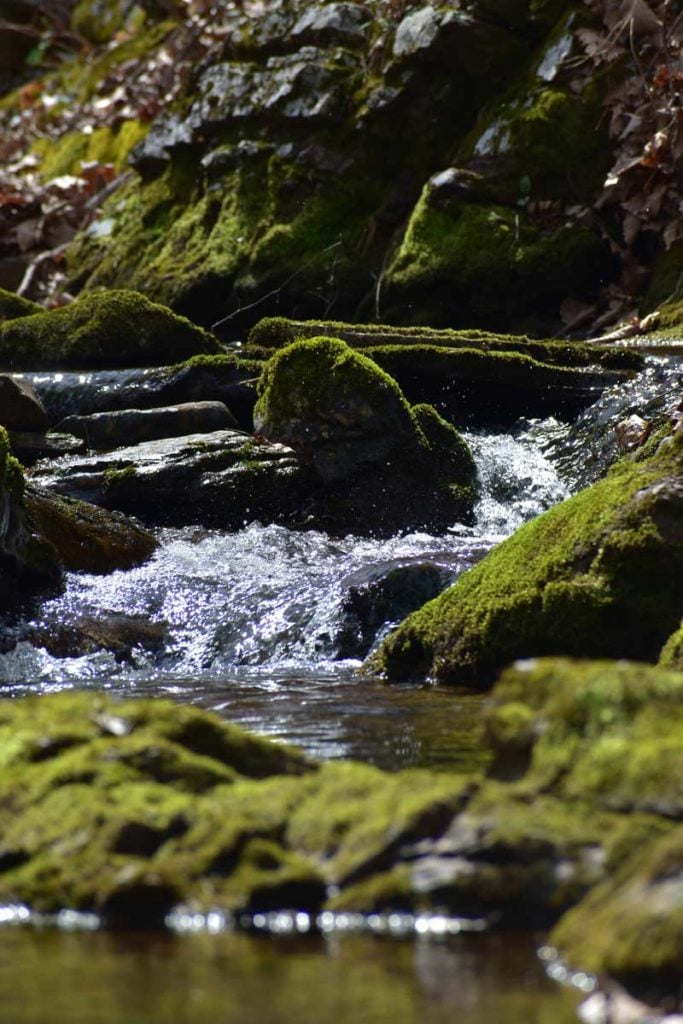
Photo credit: Sarah Vogel
Biophilia: The Call of the Wild
In 1984, biologist E.O. Wilson proposed a hypothesis he called biophilia, a word literally translated as “love of life.” According to Wilson, this is more than a feeling or a mood — humans are actually hardwired down to the nucleotides in our DNA, compelling us to affiliate with living things. Over millions of years living on the savannah, he argued, we evolved an ability to decode subtle signs from nature as a means of survival.
It is not, he argued, a single instinct, but rather “a complex set of learning rules” that fall along a spectrum of emotion: “from attraction to aversion, from awe to indifference, from peacefulness to fear-driven anxiety.” These rules do not need instruction and carry important lessons about life. Though this hypothesis is by no means considered a fact by the scientific community, it’s a popular idea that more people are beginning to explore.
Fear of spiders and snakes, for example, is demonstrated by infants long before they hear their first story about the boogeyman. This was likely an important lesson for hunter-gatherers in the brush to distinguish between edible vegetation and eight-legged foes. Alternately, consider the somewhat baffling human obsession with flowers. Flowers don’t provide any tangible benefits and yet, the floral industry has actually been growing since the 19th century. Maybe that’s because flowers equal fruit and at one point, fruit meant the gift of another tomorrow.
Dennis Proffitt, researcher at the University of Virginia and my former psychology professor, broke it down for me into very simple terms: “Emotions put value on everything. Emotion is basically telling us what is good or bad. It’s mostly controlled by that part of the brain that is reptilian, the oldest part of our brain. And it’s got a fundamental lesson of life. Approach those things that are good for you, and avoid the things that are bad.”
Science has figured out that nature can have a dramatically positive impact on countless components to your well-being: your immune system, how much you exercise, your physical abilities, cardio health, anxiety and depression, stress levels, self-esteem, self-control, confidence, mindfulness, mental acuity, memory, social skills, emotional regulation, creativity, empathy. The list goes on.
According to the theory of biophilia, we are drawn to the natural world because we evolved in its context. All of our mechanisms were engineered to operate best within nature (like the blobfish at the bottom of the ocean), and our brains give us cookies to let us know when we’re doing something right. The evidence is clear that engaging the natural world is indeed rewarding in significant ways.
In one study, prison inmates with window views of nature made significantly fewer sick call visits and were involved in fewer violent incidents, scoring yet another point for windows. But even pictures and simulations of nature can be similarly powerful, which is good news for office workers or high-rise dwellers who may not have access to natural views in everyday life. In another study, dental patients who looked at a landscape mural in the waiting room registered lower blood pressure and reported lower anxiety than those who did not. Nice to know a screensaver or a thrift store ocean painting can do in a pinch.
A walk in the woods can increase the activity of your “natural killer” (NK) cells — the ones that destroy cancerous or infected cells — for up to seven days. Even more shocking is that an oil diffuser can pull off the same trick. Hotel guests with cypress oil vaporized in their rooms were found to have lower cortisol (stress hormone) levels and higher NK cell activity. You can literally fight cancer by sniffing a tree.
In one study, researchers asked participants to undergo a series of cognitive tests before asking them to take a 50-minute walk either in the city, or in an arboretum. When the participants returned and took the cognitive tests again, the results showed the arboretum walkers had improved their memory span by 20%, but the city walkers showed no such gains. In another study, participants were asked to solve creative puzzles before and after a four-day backpacking trip. After the trip they were able to solve nearly 50% more. That’s some brain food to give Adderall a serious run for it’s money.
Brain imaging gives us another perspective of the brain on nature. When subjects are looking at pictures of an urban setting, fMRI scans show increased blood flow to the amygdala, the part of the brain responsible for fear and anxiety. Looking at natural scenes, on the other hand, activated the anterior cingulate and the insula, parts of the brain that handle empathy and regulation of emotion. When monitoring subjects with a mobile EEG machine as they walked outdoors, the readings indicated “lower frustration, engagement, and arousal, and higher meditation levels.” Less angry, less stimulated, less stressed, more zen.
Nature does great things for our bodies and brains. But why? Since my old professor specialized in perception and cognition, I thought I’d ask him to weigh in.
Attention Restoration Theory
“One could argue the most valuable resource is cognitive attention.”
Cognition and perception were Professor Proffitt’s field of expertise, and while it may appear biased to claim cognitive attention as our most valuable resource, he’s not wrong.
Take a second right now to pay attention to all the stimuli around you. The smell of the air, the ambient noises, the feeling of your clothes against your skin. As for me, I’ve suddenly noticed the gentle clunking of an ice machine, the tension in the couch springs beneath me, and the imposing weight of an expectant dog planting his head on my shoulder in hopes of a scratch on the head. Actually, I noticed the dog about a minute ago and chose to ignore him to finish this paragraph, but my neglect is no longer tenable. Excuse me for a moment.
… And we’re back. All of this sensory information (including the burning eyes of Toby the yellow lab) is competing for our attention and we just can’t pay attention to all of it at once. The human brain is designed to process one thing at a time and tune out the rest, like a theatre technician with a spotlight trained on a dark stage. This can be more or less challenging depending on how invasive the distractions.
“Attention is limited,” continued Professor Proffitt. “If overused, it produces fatigue, and it takes a lot of effort when you have to control it, like reading a boring textbook.”
Reading a boring textbook is one of many activities in today’s world that demands directed attention, or the willpower to focus on something that you wouldn’t naturally focus on. Like using a muscle, too much exertion will deplete your stamina until you’re all tuckered out. This is called ‘directed attention fatigue,’ the symptoms of which include irritability, poor cognitive performance, lack of impulse control, increased accidents, and forgetfulness.
Every day, texts, calls, notifications, noise from the radio, nearby conversations, and bright advertisements are begging for our attention. Our brains are constantly working to maintain focus on the important stuff, but it’s hard when there’s so much information and it all seems important. So we try to our best to make the right choices and keep up with the frenzied mental juggling act of being alive in the 21st century.
This juggling act is called multitasking, something we consider so valuable it’s often listed as a job qualification. We try really hard to keep the balls in the air, but on average, people switch activities every three minutes. It doesn’t work well and is pretty unavoidable in a plugged-in world. Anyone who has cursed the invention of the pop-up ad, the paywall, and the push notification will understand all too well what I am talking about. (For a thought-provoking read, check out the guy who willingly endured the cruel punishment of turning on every single one of his phone notifications. Just try to avoid opening the tab to skim a quarter of the way down, find another interesting link, and leap-frog into the next virtual black hole.)
And while reading a boring textbook or multitasking on the job may seem particularly draining because it sucks, even fun and so-called passive activities like watching television will strain your cognitive faculties in order to keep up with things like plot and drama. I think most can relate to that general feeling of malaise, foggy-headedness and disassociation you start to feel after the 11th episode of whatever in a row. You’ve just got nothing left in the tank. And since paying attention is the first step to learning, planning, friendship, emotional processing (plus a whole host of other human experiences) an empty tank can be disabling.
Ecopsychologists Rachel and Stephen Kaplan suspected that nature’s positive impacts on memory, cognition, and stress may be explained by the way our brains pay attention and re-charge. Directed attention goes against the grain and requires hard work to maintain (like reading, texting, solving a math problem). Things that naturally grab our attention give our cognitive faculties a break to recover. Nature pulls attention in exactly the right way, they argue. This is called Attention Restoration Theory.
The honk of a horn could mean anything — a friendly “hello,” a nudging “not sure if you noticed the light is green,” or “this is my mating ritual, pay attention to me,” to “@#$% you.” It takes context to figure out exactly what it means, it’s confusing, and often a bit threatening. “In a city, attention is being yanked all over the place. There’s traffic, there’s horns, there’s lights, there’s people. And you’ve got to become very accustomed to it to be able to focus at all. That takes effort,” said Professor Proffitt. Walking in the city can feel like playing Frogger but with higher and more permanent stakes. Of course it’s draining.
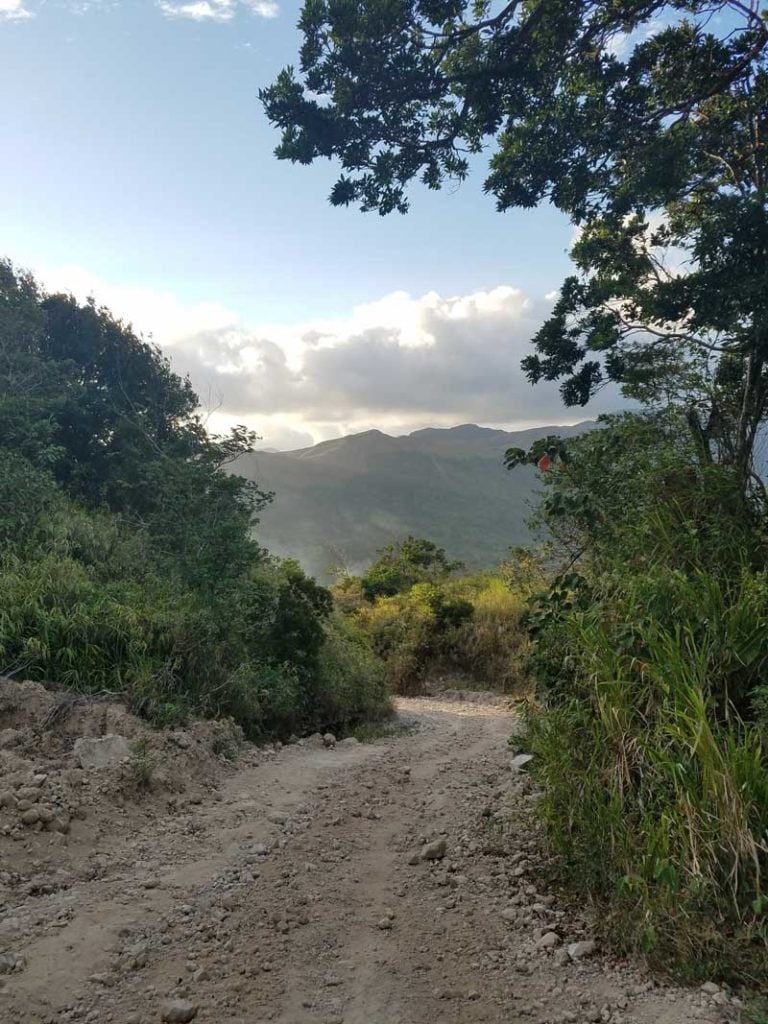
Photo credit: Sarah Vogel
On the other hand, “Nature is a sweet spot for our attentional resources,” Professor Proffitt continued. “It’s not drab because there’s always something to look at, but it’s not in your face. You have optimistic anticipation about what’s going to happen in the next few minutes on the trail. You wonder what that’s going to be like, maybe some flowers, something to look at. Your attention is being manipulated by the environment in just the way you want.”
The Kaplans called these types of stimuli “soft fascinations.” Sunsets, shadows of clouds across a valley, wildlife, and running water will all catch our involuntary attention, requiring no effort. They give our heavily fatigued minds a rest and give us an opportunity to reflect. Our brains return to baseline and our wires can untangle a bit. Our bodies and minds are calm, replenishing our stockpile of mental resources, similar to meditation.
Professor Proffitt said he couldn’t think of anything better than taking a walk in the woods. “When you walk into a place like that, you get the crud out of your head you don’t need. You look at lichen, look at rock textures. Every day and season is different. When the ground is frozen, you can look at the grass coated in ice. In the summer everything is green. In spring, flowers everywhere. Even food tastes better. You ask, ‘What does that all that other stuff matter?’ You know that you’re going to see things that you didn’t anticipate and they’re going to be beautiful.”
He pulled up a picture on his computer of his vacation in Ireland. He and his wife are smiling in front of a wave of green hills rolling along the top of a jagged, seaside crag. “Another hiker approached me on this trail and gave a card with a quote,” he said. He pulled up another tab and Googled Søren Kierkegaard.
Finding it, he adjusted his glasses and read aloud. “Above all, do not lose your desire to walk. Everyday, I walk myself into a state of well-being and walk away from every illness. I have walked myself into my best thoughts, and I know of no thought so burdensome that one cannot walk away from it.”
He turned to me in his swivel chair. “I think that’s a motto to live by.”
“So they say you can’t run from your problems, ” I started.
He smiled, a rare sight on his usual poker face. “But out in the woods? You can walk.”
Coming Home to Ourselves
So as to why nature is good for us — it’s a bit of a backwards question. In urban life, we are juggling checklists, paperwork, car horns, taxes, pop-ups, deadlines, bureaucracy, playdates, clickbait, fake news, viral videos, breaking news, credit scores, phone scams, checkbooks, car maintenance, and the beeps, bloops, and buzzes from gadgets reminding us about everything our memory is out of space to hold. We are tired.
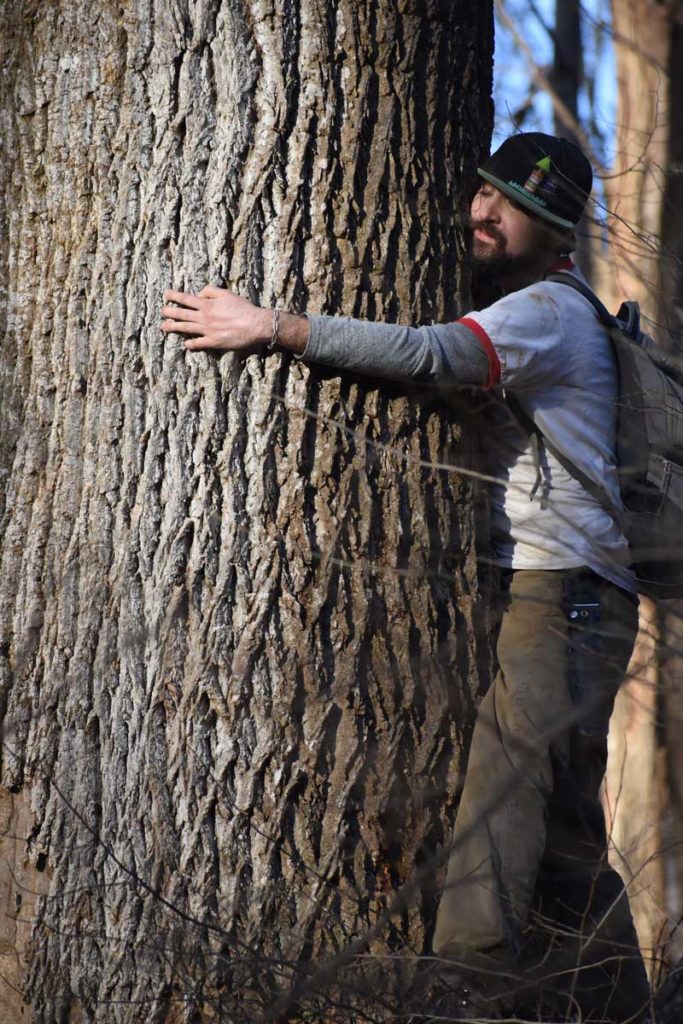
Nature, on the forgotten other hand, is what we were made for. A part of our prototype. Priorities are easier, clarity is sharper. Compared to the car horn which can mean anything, a loud snap in the woods means big animal. The setting sun means go to bed. The sound of running water means come hither. Sunshine feels good on the skin. No bears, no rain, no worries. Everything just makes more sense. And when our brains are clear about the important parts of being human, magic starts to happen.
Relationships run deep like life depends on it, because in nature it does. Self-esteem is built not on image, but on things that matter far more — perseverance, capability, kindness. Communication is intuitive, wordless. Wisdom is gleaned not from books or on screens, but through experience.
Our humanity does not separate us from nature. To the contrary, nature defines us. It shapes our relationships — to others, the universe, and ourselves. Without effort, it teaches us the most important things about being alive. To put it more eloquently than I can, I’ve leave you with a quote from ecotherapist Michele Zehr: “When we go outside, we are literally coming home to ourselves.”
—
Although scientists have a lot more questions to answer about ecopsychology, there are people who don’t want to wait around for science to figure it all out. Based on the evidence we’ve got, they are willing to take a bet that we can use the power of nature to promote health, happiness, and well-being. We know nature can reduce anxiety, improve depression, foster connection and empathy, improve cognition, increase creativity, and makes us feel more alive. With all this new-found information, I was ready to make the same bet. I just didn’t know what to do about it.
I wanted to hear stories from the mouths of actual people who had seen the magic for themselves. I wanted practical help for the rest of us to help ourselves. It was time to find the white witches and Granny women (and men) of the technological era — the modern-day Appalachian mountain healers.
